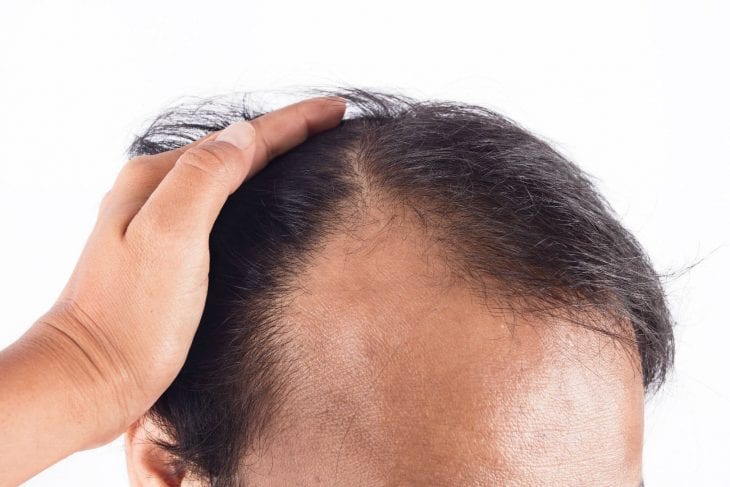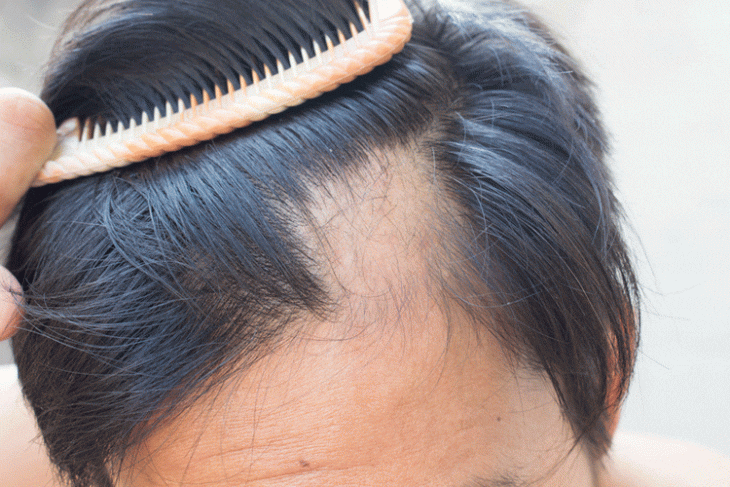Discovering a bald spot can be quite a distressing experience and it’s easy to start imagining the worst, with slow-progressing bald spots being the biggest concern.
There are a number of reasons why men and women begin losing their hair, ranging from genetics and medical conditions to hormonal fluctuations. Some hair loss is temporary and can be reversed once the underlying cause is treated; however, other types of hair loss are permanent and require further action.
Before you start panicking about hair loss and what can be done, your first step is to identify the cause of the problem. Scheduling a consultation with a hair replacement specialist such as Dr Martinick will give you the insight you need and will allow you to start planning your treatment options.
Bald Spot 101: What Causes Them?

Img source: advancedhair.com.au
There are a few reasons why a bald spot could start developing – let’s look at some of the most common causes.
Alopecia areata. This is an autoimmune disorder that causes circular bald patches on different areas of the body. Basically, the body’s immune system starts attacking your hair follicles.
Trichotillomania. This condition causes people to pull their own hair out, which can eventually result in a bald spot.
Stress and anxiety. If you’re going through a stressful time in your life, it could be affecting your hair too.
Ringworm. This scalp infection can also cause circular bald patches on the scalp.
Hairstyles and treatments. Hairstyles that strain your hair follicles can eventually cause hair loss. Certain products and treatments that contain harsh chemicals are another common culprit.
Hormonal changes. Hormonal fluctuations are a common cause of hair loss, particularly in women. Pregnancy and menopause can both cause hair loss.
Medical conditions. Hair loss is a side effect of several medical conditions but treating the condition can help reverse this effect.
Age. Naturally, age is another reason why you might be developing a bald spot.
Tips for Preventing Bald Spots

Img source: mydr.com.au
Let’s start with the fact that when balding and hair loss is caused by genetics, there’s no way to prevent it. However, there are steps that you can take to slow the process down and reduce the rate of hair loss. Hair transplants are still the best way to treat thinning hair but only if the procedure is performed by a qualified hair restoration specialist.
If you are suffering from a more preventable hair loss or would simply like to avoid bald spots in the future, here are a few tips that will come in handy.
- Make a point of not twisting, pulling or rubbing your hair
- Be gentle when you handle your hair. This means washing, drying and styling it gently and not using any harsh chemicals or treatments that could damage the follicles
- Try and stay away from any medications that are known to cause hair loss
- Practice stress management techniques
- Stay away from cigarettes
- Avoid any hairstyles that could place unnecessary strain on your hair
